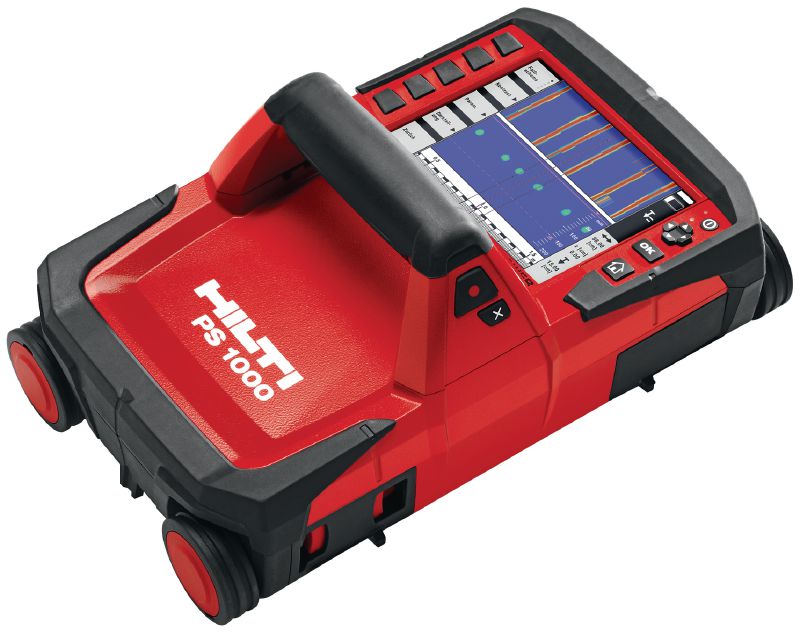Discover Hidden Obstacles with RainierGPR Concrete Scanning Modern Technology
The Value of Exact Concrete Scanning in Finding Underground Hazards
In the realm of construction and framework development, the value of exact concrete scanning can not be overstated. Under the apparently strong ground lie detailed networks of utilities, pipes, and various other subsurface structures that are usually unseen to the naked eye. The capacity to properly find and map these underground threats is not just a matter of comfort however a vital aspect of ensuring the security of both construction workers and the stability of the task itself. By deploying advanced scanning modern technologies and approaches, specialists can uncover covert risks, avoid expensive damages, and inevitably lead the way for smoother and more secure building ventures.
Advanced Scanning Technologies for Detection
Advanced radar systems are reinventing the area of below ground discovery by supplying unmatched accuracy and performance. These innovative scanning modern technologies use ground-penetrating radar (GPR) to produce in-depth pictures of subsurface structures, offering understandings into what exists under the surface with exceptional quality. By discharging high-frequency pulses right into the ground and measuring the reflections, radar systems can recognize variants in product composition and discover underground dangers such as wires, pipelines, and spaces.
Among the crucial advantages of these sophisticated radar systems is their non-invasive nature, permitting comprehensive assessments without triggering damage to the existing structures. This not just makes certain the safety of the surrounding environment however additionally minimizes the requirement for pricey repairs or disturbances to ongoing building tasks. Additionally, the real-time data supplied by these scanning technologies makes it possible for quick decision-making and boosts total job efficiency.
Relevance of Subsurface Mapping

Accurate subsurface mapping assists in preventing pricey damages to existing underground framework, minimizing the danger of crashes, and maintaining project timelines. It allows job supervisors to make educated decisions regarding site planning, devices implementation, and resource allowance. Additionally, subsurface mapping permits better control among various groups functioning on a project and assists in following regulatory demands connected to underground utility detection.
Mitigating Threats in Building And Construction Jobs
Reliable risk reduction approaches are necessary for guaranteeing the success and safety and security of building and construction jobs. One essential element of mitigating dangers in building projects is comprehensive preparation and assessment at the preliminary stages.
Additionally, establishing clear interaction networks among all project stakeholders and ensuring rigorous adherence to safety and security methods are important elements of risk mitigation. By proactively executing durable danger reduction methods, building and construction projects can decrease hold-ups, price overruns, and safety and security events, eventually leading to successful project outcomes.

Stopping Costly Damages and Delays
To minimize economic losses and task obstacles, effective strategies should be executed to prevent pricey damages and delays site in building and construction jobs. Determining these obstructions early on helps in intending the project layout extra efficiently and staying clear of potential damages throughout excavation.
Furthermore, buying training programs for construction workers on the importance of concrete scanning and safe excavation methods can substantially lower the risk of hold-ups and mishaps. Clear interaction channels in between job supervisors, engineers, and on-site employees are also important to ensure that everyone recognizes the possible dangers and follows the necessary methods to stop pricey damages. By prioritizing proactive procedures like concrete scanning and advertising a culture of security and awareness, building tasks can lessen the economic impact of unanticipated below ground blockages and prevent pricey hold-ups.
Ensuring Safety of On-Site Employee
By prioritizing proactive procedures such as thorough training programs and clear interaction channels, building tasks can make sure the security of on-site employees amidst the prospective risks detected via concrete scanning. Appropriate training equips employees with the knowledge and abilities needed to browse construction websites safely, especially when dangers are determined through scanning procedures. Training should cover danger acknowledgment, emergency situation treatments, and the proper usage of individual protective devices to alleviate threats efficiently.
Furthermore, establishing clear communication networks is vital for distributing info regarding determined hazards immediately. This ensures that all on-site employees understand prospective dangers and can take essential safety measures to avoid crashes. Routine security rundowns, tool kit talks, and consistent updates concerning scanning results aid keep everyone notified and aggressive in preserving a secure functioning environment.
Furthermore, executing stringent adherence to safety protocols and laws, carrying out regular safety audits, and cultivating a culture of safety and security consciousness amongst employees are important components in making sure the health of on-site employees during building this hyperlink tasks - RainierGPR Concrete Scanning. Positive precaution not only safeguard employees from damage however likewise add to the overall success and efficiency of the task
Conclusion
In conclusion, specific concrete scanning plays an essential function in discovering underground dangers. Making use of sophisticated scanning innovations and subsurface mapping aids reduce risks in building and construction tasks, preventing expensive damages and hold-ups. click here for more info By guaranteeing the safety and security of on-site employees, accurate scanning can significantly improve the performance and success of construction procedures. It is imperative for construction companies to focus on the use of accurate scanning methods to decrease possible risks and make sure a smooth building process.
By proactively implementing robust danger reduction methods, construction jobs can minimize delays, expense overruns, and safety and security events, eventually leading to effective project end results. - RainierGPR Concrete Scanning
To reduce economic losses and task problems, effective techniques should be executed to stop costly damages and delays in building and construction tasks. By prioritizing proactive steps like concrete scanning and advertising a society of safety and security and awareness, building jobs can minimize the monetary influence of unexpected below ground obstructions and avoid costly delays.
By prioritizing aggressive actions such as extensive training programs and clear interaction networks, building projects can make certain the safety and security of on-site employees in the middle of the prospective risks found through concrete scanning. Utilizing advanced scanning innovations and subsurface mapping aids alleviate risks in construction projects, protecting against pricey problems and delays.